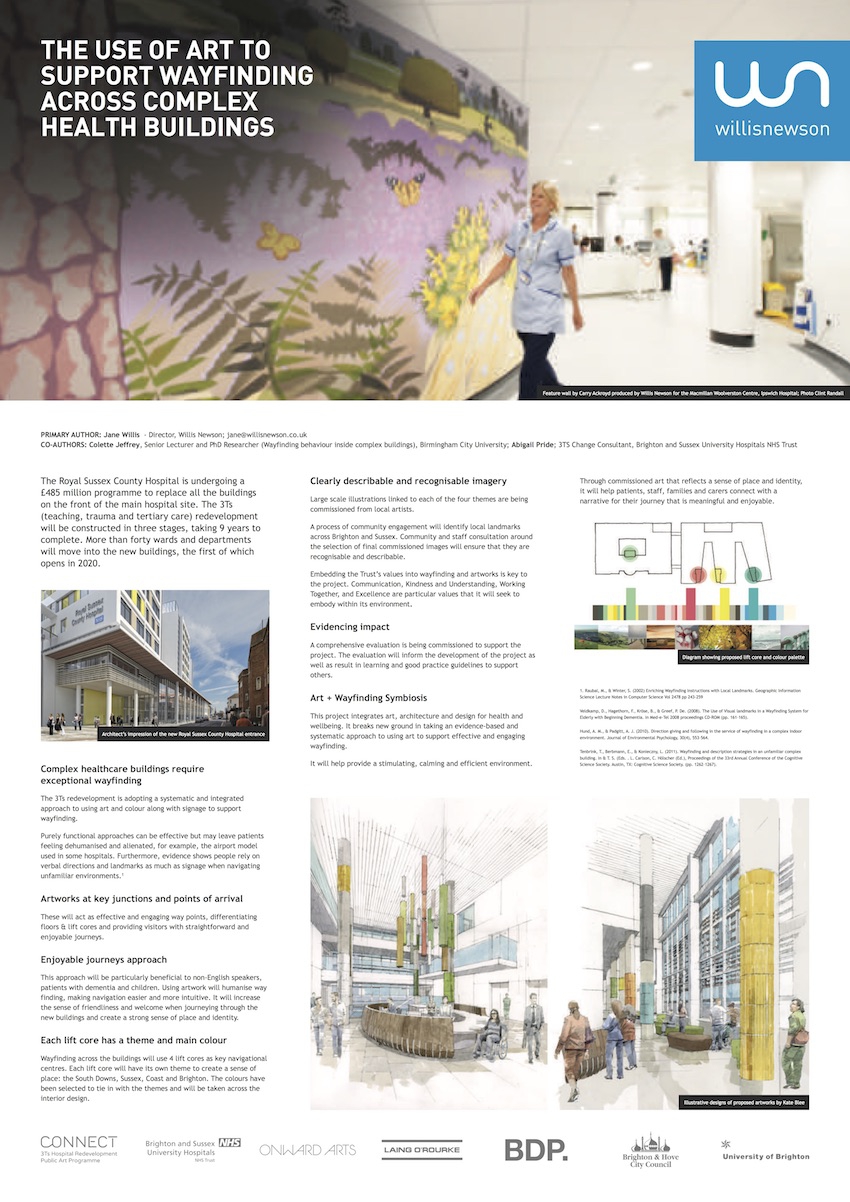Healthcare / Arts and health
European Healthcare Design 2017
The use of art to support wayfinding across complex health buildings
By Jane Willis, Colette Jeffrey, Abigal Pride | 22 Jun 2017 | 0
The 3Ts (Trauma, Tertiary and Teaching) redevelopment of the Royal Sussex County Hospital is a £486 million programme to deliver new state-of-the-art healthcare facilities. Construction will take place over eight years with completion due in stages between 2020 and 2024. More than 50 wards and departments will move into the new buildings, which will include outpatient, inpatient, specialist services and a new cancer centre.
Abstract
Complex healthcare buildings such as this require great wayfinding. Evidence shows people rely on verbal directions and landmarks, as much as signage.
Purpose: The 3Ts redevelopment is adopting a systematic and integrated approach to using art, colour and signage to support wayfinding.
Artworks will identify key junctions and points of arrival, differentiate floors and lift cores, and provide visitors with straightforward, enjoyable journeys. Using artwork not only makes navigation easier, but it also adds a human touch and creates a strong sense of place.
Methods: Wayfinding across the buildings functions across four lift cores, which have each been assigned a theme and main
colour. The themes selected to create a sense of place are: The Downs, Sussex, Coast, and Brighton. Colours have been selected to tie in with the themes and imagery linked to each theme will be commissioned.
The project aims to embed the values of the trust in its environment, in particular, communication, kindness, working together, and excellence. Community engagement will help identify local landmarks across Brighton and Sussex. Community and staff consultation around the selection of final commissioned images will ensure they are recognisable and describable.
Evaluation: An evaluation will inform the development of the project, as well as result in learning and good-practice guidelines.
Conclusions: This project integrates art, architecture and design for health and wellbeing. It breaks new ground in taking an evidence- based, systematic approach to using art to support wayfinding. It will provide a stimulating, calming and efficient environment. Through commissioned art that reflects a sense of place, it will help patients, staff, families and carers connect with a narrative that is meaningful and enjoyable.
Organisations involved


